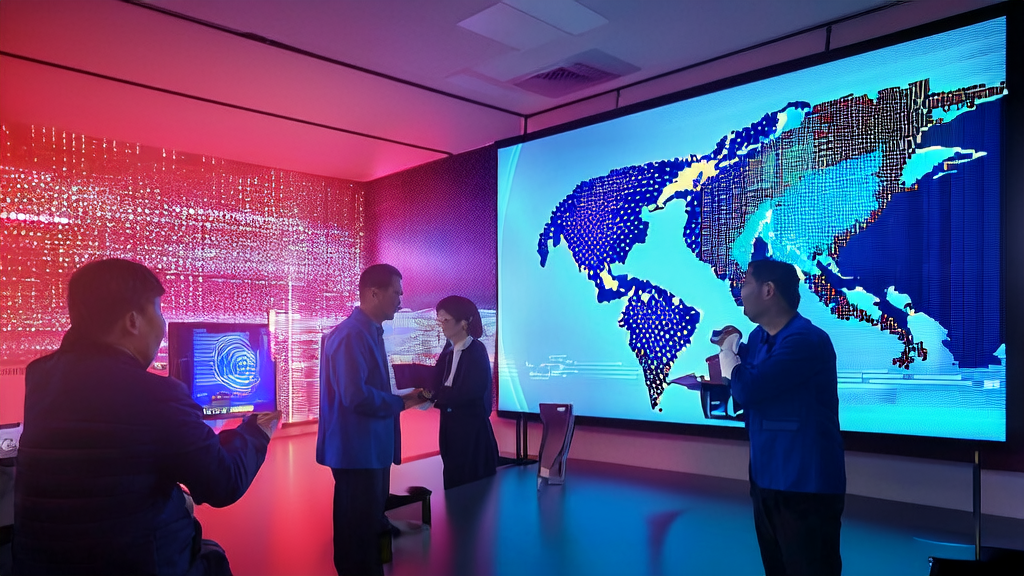
This article delves into how cutting-edge artificial intelligence technologies, notably the new GPT-5 model, enable businesses to target audiences more accurately while reducing costs per acquisition (CPA). Through real-world case studies and technological breakdowns, it showcases how AI transforms advertising efforts and provides actionable tips for business owners and marketers alike.

在跨境电商领域,有效获取优质客户已成为企业持续增长的关键。本文深入探讨了AI客户预测模型如何帮助企业精准筛选潜在客户,优化营销活动,实现从低成本到高转化的跃升。结合最新的热点事件——Google Gemini 推出的新功能,探讨了如何在实际操作中应用AI技术提高客户互动与转化。

In the age of digital marketing, AI customer prediction models have become crucial for boosting business lead generation efficiency. This piece investigates AI's ability to target valuable customers more efficiently, particularly aiding in the cross-border ecommerce field by minimizing costs and driving better conversion rates. Furthermore, it analyzes Adobe’s significant move in purchasing Semrush at a premium and explores the potential and challenges ahead.

As AI technology transforms digital marketing, advertisers face the challenge of effectively reaching their target demographics with minimized CPA. This article explores the 2025 trends in AI-advertising optimization, presenting practical case studies and best practices to help businesses stand out in intense competition.

AI technology transforms conventional marketing by leveraging machine learning algorithms. This article explains how AI-driven customer prediction models can enable personalized emails, providing new growth opportunities for cross-border sellers.

In digital marketing, the use of AI technology is becoming crucial for enhancing marketing efficiency. This article discusses the important role of AI in optimizing advertising placements, particularly within the 2025 e-commerce sector, referencing NetEase’s third-quarter earnings showing innovation highs for AI-subscription service sales.

Driven by artificial intelligence technology improvements, the AI-powered client prediction model becomes pivotal for enhancing B2B marketing effectiveness across global supply networks. Especially in trade-reliant industries, using vast troves of manufacturing import/export information holds promise to uncover hidden prospects and boost sales performance efficiently. Here’s what we’ll examine: AI's role in analyzing customs records to spot purchase habits; the inherent value these records provide to businesses; and success cases like a case study about a hardware provider scaling their reach globally.

The advancement of AI is driving a revolution in cross-border e-commerce, allowing personalized emails and customer targeting. This report discusses upcoming developments from Lenovo and reveals how companies may optimize future marketing approaches.

在全球化的商业环境中,有效管理和优化客户资源已成为企业竞争的关键。随着AI技术的飞速发展,AI客户预测模型的应用正逐渐改变传统的客户管理模式。本文将探讨如何通过AI客户预测模型有效筛选优质客户,降低无效营销投入,特别是在跨境电商领域,为企业的营销策略带来新的视角和方法。

With the rapid development of AI technology, in 2025 cross-border e-commerce enters a period of unprecedented transformation opportunities; new solutions for customer acquisition have emerged. This report explores ways to utilize AI techniques for efficient customer capture in cross-border e-commerce.

As artificial intelligence technologies continue to evolve, the role of AI customer prediction models in 2025 has become increasingly prominent for accurately capturing prime prospects while cutting operational inefficiencies. From analyzing data for tailored targeting across different industry domains like social platforms or online sales ecosystems, these tools provide actionable insights to drive success. However, businesses must balance innovation against regulatory changes led by policy-makers globally—such as proposed limits on local regulations from U.S. Republicans affecting technology deployment—and navigate compliance concerns amidst expanding opportunities within digital realms.